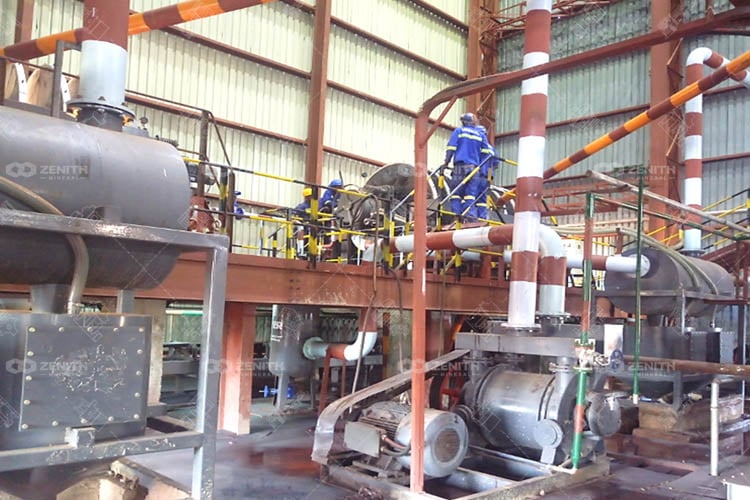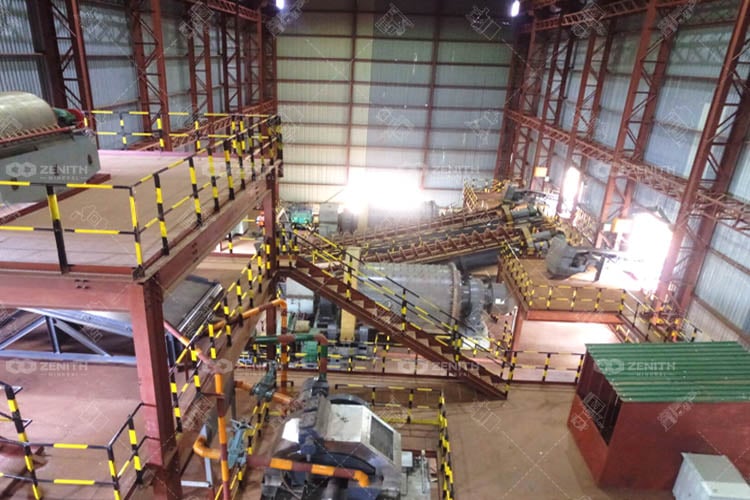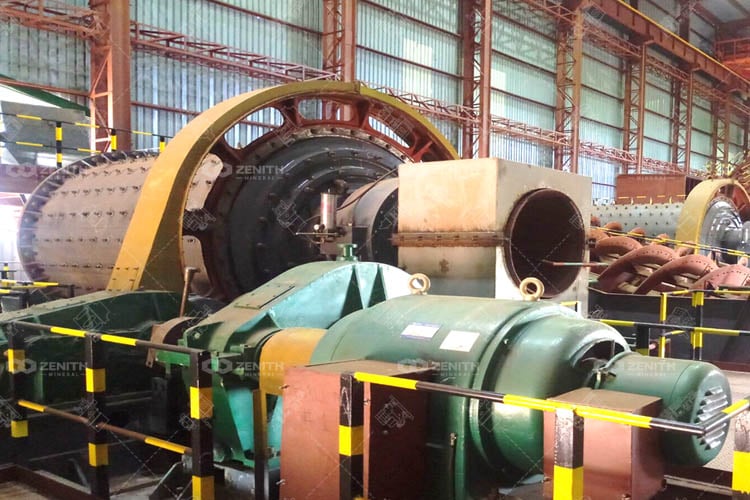Zambia is renowned for its rich mineral resources, particularly its vast deposits of copper and iron ore. Among the various minerals, hematite (Fe₂O₃) stands out as a significant contributor to the country's mining sector. Hematite ore is known for its high iron content and is primarily used in steel production. This article provides a comprehensive overview of a hematite ore processing plant in Zambia, focusing on its capacity, processing techniques, equipment used, and the benefits of the operation.

Hematite is one of the most abundant iron ore minerals, characterized by its reddish-brown color and metallic luster. It is typically found in sedimentary and metamorphic rocks and is a primary source of iron for steel production. The mineral composition of hematite includes:
Hematite's high iron content makes it an essential raw material for the steel industry. The increasing demand for steel, driven by urbanization and infrastructure development, emphasizes the need for efficient processing of hematite ores.
The hematite ore processing plant in Zambia is strategically located to leverage the abundant local resources. The plant has a designed processing capacity of 1000t/d, making it a significant player in the region's iron ore production.

The processing of hematite ore involves several stages, including crushing, grinding, magnetic separation, and dewatering. The following sections outline these processes in detail.
The first step in the processing of hematite ore is crushing, which reduces the size of the ore to facilitate further processing. Key aspects include:
After crushing, the ore is subjected to grinding to liberate the iron minerals from the gangue. This is typically done using:
Hematite is a magnetic mineral, and magnetic separation is an effective method for concentrating the iron content. The process involves:
After magnetic separation, the concentration is often in a slurry form, which requires dewatering to achieve the desired moisture content. Dewatering techniques include:
The efficiency and effectiveness of the hematite ore processing plant are heavily influenced by the selection and performance of the equipment utilized throughout the operation. Each piece of machinery plays a crucial role in ensuring that the hematite ore is processed to meet the desired quality and specifications. Below, we delve deeper into the key pieces of equipment employed in the processing of hematite ore, highlighting their functions, features, and significance in the overall operation.
The jaw crusher is typically the first stage of the crushing process. Its primary function is to reduce the size of large hematite ore chunks into manageable pieces, preparing them for subsequent processing stages.
Features:
The jaw crusher's role as the primary crusher is critical in the hematite processing line, as it sets the stage for efficient material handling in later stages. By reducing ore size to optimal levels, it enhances the performance of secondary crushing equipment.
Following the jaw crusher, the cone crusher provides secondary crushing. Its primary function is to achieve a finer particle size, ensuring that the material is adequately prepared for the grinding stage.
Features:
The cone crusher is vital for achieving the desired particle size and shape, which are crucial for effective grinding and subsequent separation processes. Its high efficiency contributes to overall operational productivity.
The ball mill is used to grind crushed hematite ore into a fine powder, enhancing the liberation of iron particles from the gangue material. This step is essential for maximizing recovery during the separation process.
Features:
The ball mill is a critical component in the hematite processing plant, as it significantly impacts the liberation of iron. The finer the grind, the more effective the subsequent separation processes will be, leading to higher quality output.

The wet magnetic separator is employed to separate iron-rich particles from non-magnetic waste material after grinding. This process is crucial for concentrating the iron content of the ore.
Features:
The wet magnetic separator plays a pivotal role in enhancing the purity of the iron concentrate. By efficiently separating iron from waste, it improves the overall yield and quality of the final product, making it suitable for steel production.
The thickener is used to concentrate the slurry after magnetic separation by allowing solid particles to settle. This process is essential for reducing the volume of liquid in the slurry before further dewatering.
Features:
The thickening process is crucial for preparing the slurry for dewatering, improving efficiency in the overall processing line. By concentrating the solid content, it reduces the volume of material that needs to be treated in the next stages.
The filter press is utilized to dewater the concentrated slurry produced from the thickening process, generating a dry iron concentrate that can be easily handled and transported.
Features:
The filter press is the final step in the dewatering process, ensuring that the iron concentrate is produced with the desired moisture content. This efficiency is crucial for facilitating storage, transportation, and further processing of the final product.
The hematite ore processing plant in Zambia is a vital contributor to the country's mining sector. By effectively processing hematite ore, the plant not only provides high-quality iron concentrate for steel production but also supports economic growth and sustainable development in the region.
Each piece of equipment in the hematite processing plant plays a vital role in ensuring the effective and efficient processing of hematite ore. From initial crushing to final dewatering, the selection and performance of these machines significantly impact the overall productivity, quality, and cost-effectiveness of the operation. By investing in high-quality equipment and maintaining rigorous operational standards, the hematite processing plant can achieve optimal results, contributing to the success of the iron ore industry in Zambia and beyond.

This granite crushing plant is designed to produce aggregates in multiple sizes, including 0-5mm, 5-10mm, 10-20mm, and 20-31.5mm, thus addressing the specific requirements of different construction projects.

The common seen gold ore are placer gold ore and rock gold ore. But how to get gold from gold ore? We will introduce 4 gold extraction methods in this article.

Iron is the fourth most-abundant element, composing approximately 5 per cent by mass of the earth's crust. In the modern industry, iron is the most importan
Fill your requirements here, and we'll send the custmized solution and quotation to you by the reserved contact information.